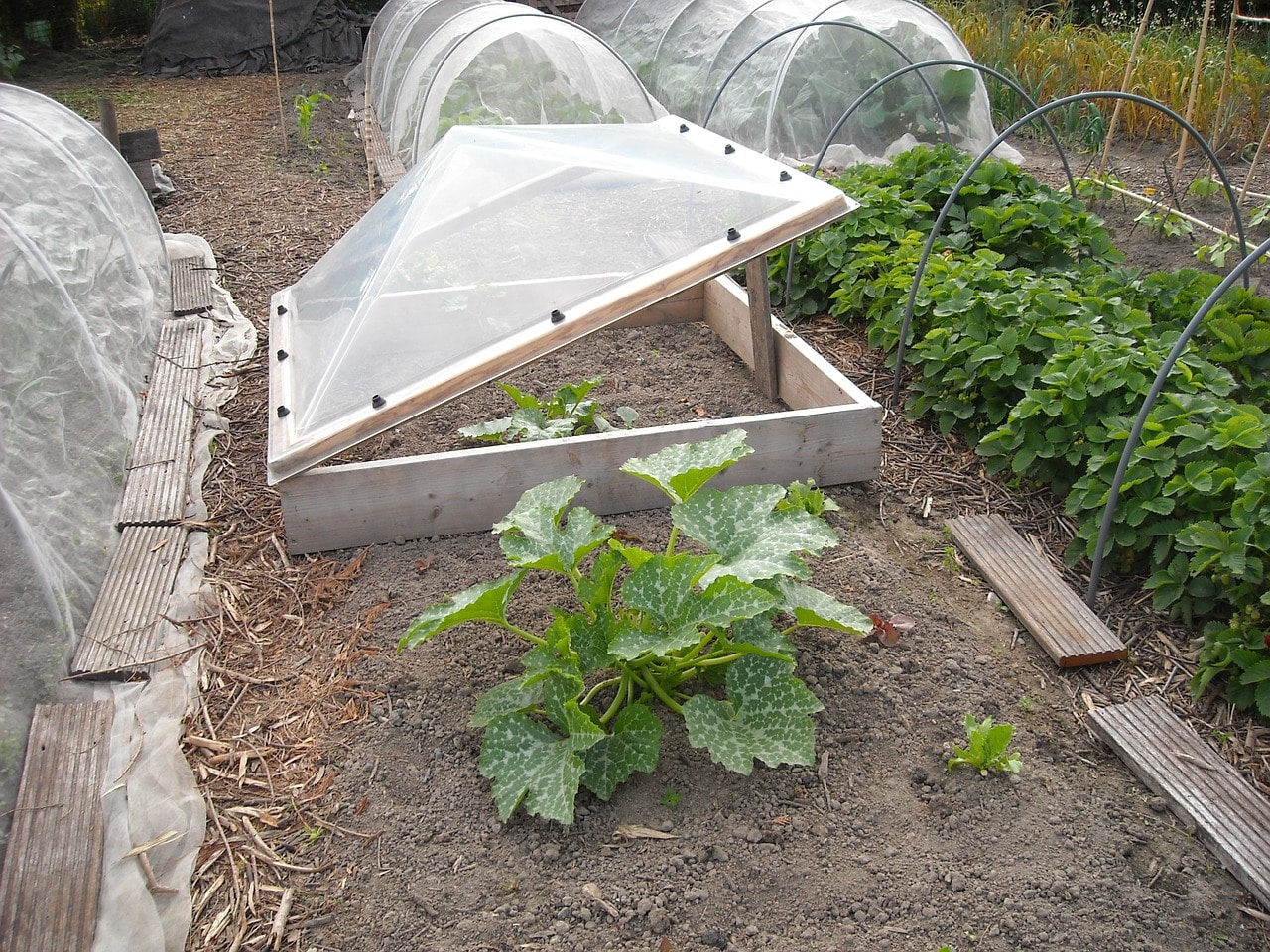Want to know how to make a small greenhouse for seedlings? Building a small greenhouse for your seedlings is very easy. You can either make a greenhouse for a single plant or one that holds several plants. We’ll show you how to do both using cost-effective materials.
How Can You Make a Small Greenhouse for Your Seedlings?
Here are two simple ways to create a mini greenhouse for your seedlings:

Using a mason jar for one plant
If you only plan to grow one plant or very small plants, you can use a mason jar with a lid to create a mini terrarium. Mason jars are available in different sizes, so make sure to choose one depending on the type of plants you want to grow. Fill the jar with soil, compost, and growing materials. You can even put pebbles or another décor to design your terrarium, but make sure to give you seedlings enough room to grow.
Using a fish tank for larger plants
If a mason jar is too small for you, consider using fish tanks to create a greenhouse kit. Whether you prefer a square or rectangular tank (or even a fishbowl!), it’s up to you. As mentioned, make sure that the size of the tank is proportionate to the size of the plants you’re looking to grow.
You can use a small fishbowl for smaller greenhouses. You can cover it with plastic or leave it open, depending on the needs of the plants inside.
For larger tanks, you can flip it upside-down to replicate a commercial mini greenhouse. If you leave it the right side up, be sure to cover it with a plastic wrap or a wooden frame.
5 Easy Steps How Do You Start Seeds in a Greenhouse
Seeds germinate faster in warm temperatures, and by placing them in a greenhouse, it’s easier to maintain soil and air temperatures. Here’s how you start seeds in a greenhouse:
Step #1. Place a tray or seedling pot inside a greenhouse
Fill the tray or pots with a mix of potting soil. Next, fill up the water tray with an inch of water and place the tray with premixed soil or pots inside. Let the soil absorb the water for about half an hour or until the top is moist but not wet. You can then drain the remaining water from the water tray.
Step #2. Sow the seeds
Sow your seeds in the soil mix and adjust the depth following the instruction on the packet. Sow two seeds for every pot or space. After planting, spray a little water on the surface to moisten if needed.
Step #3. Cover your greenhouse
Once your seeds are all set, cover your greenhouse and place it where it gets indirect sunlight. The temperatures should be between 65- and 75-degrees F. The soil will retain moisture if you cover the greenhouse, so you don’t need to water your seeds until after it germinates.
Step #4. Open the greenhouse when seeds sprout
Take off the greenhouse cover once the seeds start to sprout and let fresh air in.
Step #5. Water your seedlings
Don’t forget to water your plants when the soil is dry. Water your seedlings by pouring water into the drip tray. This allows the soil to soak up water from the ground up to avoid wetting the leaves and making your plants susceptible to certain plant diseases. Also, make sure to take off the lid of your mini greenhouse before your plants grow taller.
Why Are Small Greenhouses a Better Option?
If you’re looking for a cost-effective, convenient, and compact greenhouse, mini-greenhouses are the perfect option. Even though they’re small, it functions just like a regular-sized greenhouse. If you’re still on the fence, here are some of the reasons why small greenhouses are a great choice for gardening:
Ideal for homeowners
You don’t really need a big, glass-walled greenhouse to plant your favorite fruits and veggies. Greenhouses don’t have to be huge and expensive. For the average homeowner, having a mini greenhouse is already more than enough.
Protect your plants from unwanted pests
Rabbits, rodents, snails, caterpillars, and other animals and insects love the taste of your produce. These pesky critters could eat away a month’s worth of hard work. You can protect your plants from animals and insects that love to eat your plants by placing them inside a greenhouse.
Keep your plants safe from bad weather
Storms, blizzards, and heavy rain can uproot your plants, especially the more tender ones. Growing them inside a greenhouse makes it easier for you to grow healthy plants in unpredictable climates. Whether it’s storming outside or raining hard, your plants will stay safe and warm.
Learn more about greenhouse gardening
Greenhouse gardening is one of the best ways to grow crops all year round. However, greenhouses can be a costly investment. Before investing in a regular-sized greenhouse, you can learn how it works with a mini greenhouse. It’s more cost-effective, but it functions just like a regular greenhouse. In this way, you’ll be able to determine whether greenhouse gardening is for you.
Final Thoughts on How to Make a Small Greenhouse for Seedlings
Now that you know how to make a small greenhouse for seedlings made out of mason jars and fish tanks, there’s no reason for you not to make one. But if it’s too much work, you can always buy ready-made mini greenhouses. They’re cost-effective and durable, so you can enjoy your greenhouse for years to come.
